The inside story behind the bungled Bombardier C Series
The C Series has a lot going for it, but management missteps have brought Bombardier to the brink
Share
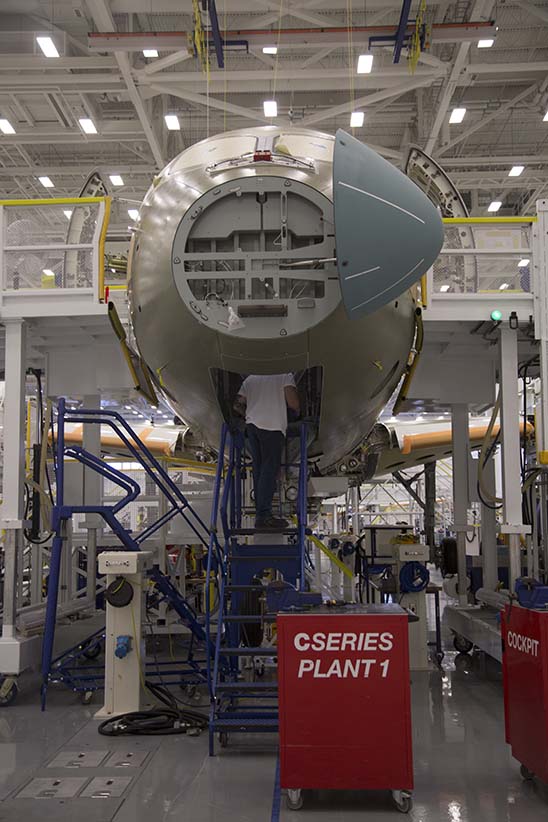
It was an astonishing bit of candour, uttered as it was by the president and CEO of one of the largest transportation companies in the world. The Quebec government had just announced a $1.3-billion investment in the C Series, the new line of commercial jets from Montreal-based rail and aerospace company Bombardier. Plagued by technical delays, cost overruns and nagging existential questions about its very purpose, the C Series has long been a source of unwelcome headlines for the company.
Landing on the same day as the company’s ugly third-quarter report—Bombardier had lost nearly $5 billion, mostly having to do with writedowns on the C Series—the $1.3-billion government investment, equivalent to about $160 for every man, woman and child in the province, was meant to be a bit of good news in an otherwise gloomy day for the company. Bombardier president and CEO Alain Bellemare spoke to journalists following the announcement, one of whom noted that as recently as July, management had assured investors the company had enough cash to see the C Series into production. Now the Quebec government was investing, and the company was petitioning the federal government to do the same. “I’m having trouble understanding what happened,” the journalist said.
“That’s an excellent question,” Bellemare responded to the non-question, in his raspy French bonhomie. “Actually, I wonder that too.”
Related: Why Quebec’s Bombardier bailout isn’t as crazy as it sounds
Left unsaid in Bellemare’s ensuing explanation was how the company was able to secure the money from a government in the depths of austerity measures mere months after saying it wouldn’t need financial assistance for an airplane project that is 2½ years late, US$2.2 billion over budget and sorely lacking in confirmed orders.
Even more gobsmacking to analysts and observers: that Bombardier was able to secure the funding without relinquishing its corporate governance structure, despite having lost nearly 90 per cent of its value since June 2008. This dual-class share structure ensures that the Bombardier family and that of company scion Laurent Beaudoin remain in control of the board; the company has had a CEO from the Beaudoin or Bombardier families for 66 of its 73 years in business.
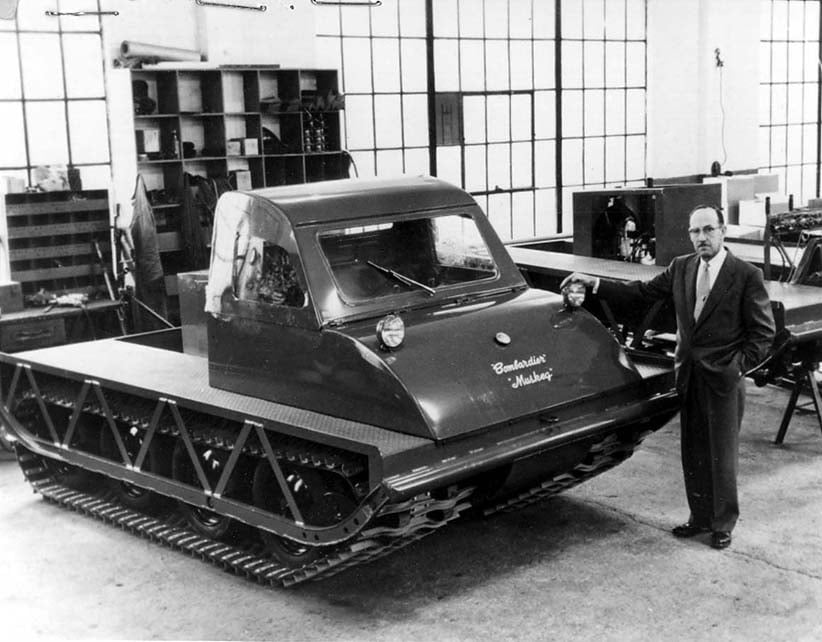
The power the Bombardier-Beaudoin clan wields over Bombardier the company is surpassed only by their secrecy. Very little is known about the family dynamics at play behind this crown jewel of Quebec Inc. The shares are controlled by the four children of Joseph-Armand Bombardier, the mechanic and inventor who in 1937 gave the world the snowmobile. Claire Bombardier Beaudoin, J.R. André Bombardier, Janine Bombardier and Huguette Bombardier Fontaine control the majority of Bombardier’s voting rights.
Yet despite being the picture of discretion, the families are reportedly frustrated that the battered share price has drained much of their wealth—since 2008 the value of their Bombardier stake has dropped from $2.2 billion to $260 million. And according to a source close to the family, who spoke to Maclean’s on condition of anonymity, they put the blame squarely on Pierre Beaudoin, 53, the company’s erstwhile CEO and its current executive chairman.
Pierre is the son of Laurent Beaudoin, who turned his father-in-law Joseph-Armand Bombardier’s fledgling snowmobile company into a global transportation brand. Pierre joined the company in 1985 and became its CEO in 2008. Pierre became Bombardier’s executive chairman in 2015, after stepping down as CEO.
“The families are very disappointed in Pierre. They’re wealthy, so it’s more a question of pride. They’ve taken the stock collapse almost as a personal slight,” says the source close to the family.
As president of Bombardier Aerospace, Pierre launched the Learjet 85 business airplane in 2007. Less than a year later, as Bombardier CEO, he launched the C Series program. Today, the Learjet has been shelved, with the company incurring a $1.4-billion writedown last year on the shuttered project, while the C Series has only 243 confirmed sales. Meanwhile the company’s new VIP business jets, the newest editions to the Global Express program launched in 1993, were meant to hit the market in 2016. That’s been delayed by at least two years.
With the success of the C Series in doubt and Bombardier’s share price dipping below a dollar in recent weeks, former executives at the company are irked. “The reason the company is where it is today is because of the leadership,” says a former Bombardier senior executive, who spoke to Maclean’s on condition of anonymity. “Pierre would never have been CEO of that company if he didn’t have his name, period.”
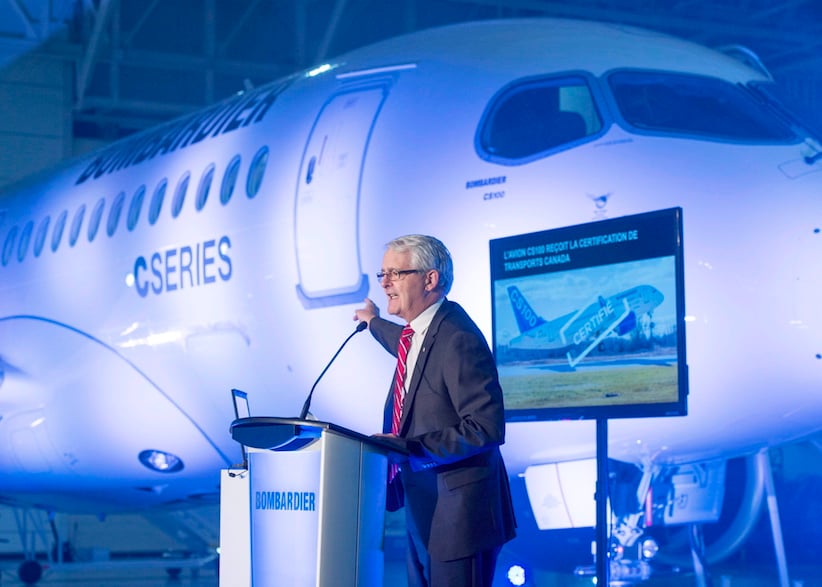
Now, after so many stumbles, taxpayers are being asked once again to cough up. Bombardier will likely receive its infusion of federal cash. In 2008, the Conservative government approved a $350-million loan to cover research and development costs of the C Series. This loan, along with the $117 million from the Quebec government and $310 million from the British government—Bombardier Aerospace employs 6,000 people in Belfast—has yet to be repaid.
Despite evident governance issues and bleak financial prospects, Bombardier remains “a key anchor firm for Canada’s aerospace industry,” according to a recent government memo prepared for the Liberal government last fall. Translation: for all its warts, allowing Bombardier to fail would have enormous political implications for Justin Trudeau’s government.
Here’s another translation. Rightly or wrongly, Bombardier will continue to exist thanks in large part to the Canadian taxpayer.
Related: Jason Kirby’s idea for Bombardier: What if we let it fail?
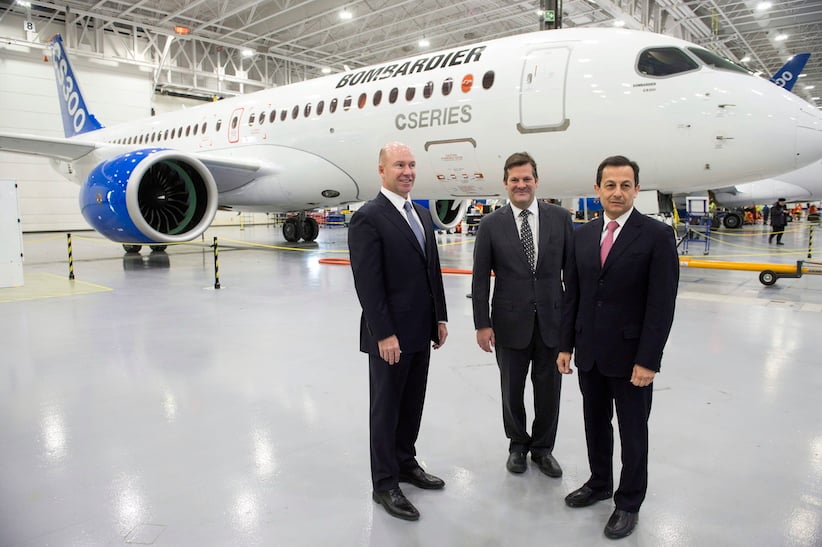
In many ways, the development of the C Series is entirely in line with the company’s high-risk, high-reward history of either conquering market segments or conjuring them out of thin air. The company that became Bombardier was birthed in a garage in Valcourt, Que., a swath of wooded wilderness located about 120 km east of Montreal.
It was in this garage, in the depths of the priest-ridden era that was Quebec in the 1930s, where Joseph-Armand Bombardier invented the snowmobile. He envisioned a vehicle that would allow those priests (along with doctors, teachers and the like) to travel from village to snowbound village. By 1963, the nascent company was selling $10 million worth of the machines a year, mostly to recreational users. A new market was born.
Though separated by nearly 80 years and innumerable levels of engineering complexity, the C Series aircraft shares certain traits with its comparatively humble Ski-Doo cousin. It is a brand-new airplane design, for one, the first such innovation in narrow-body aircraft in nearly 20 years.
The two C Series models, the CS100 and the larger CS300, have a seating range of 100 to 160 seats, a mostly unserved market between the 60-to-100 seat regional jet class and narrow-body behemoths like the Boeing 737. Its design, along with the use of composite production materials, allows for a more technologically advanced and much less thirsty airplane than its competitors.
As C Series president Rob Dewar pointed out during a tour of Bombardier’s manufacturing facilities near Montreal, the C Series has bigger windows, larger storage bins, wider aisles, more headspace, a better cockpit and a quieter ride than anything else on the market.
The C Series is a potential game-changer, says U.S. aerospace consultant Ernie Arvai. “Technically, it’s a superb airplane, and it beats the other guys handily at the same size class. To some degree the C Series caused Airbus to re-enter the A320 class with the Neo. Airbus realized they had to be more competitive.”
The problem is simply everything else. Adjusted for inflation, fuel prices are less than a third what they were when the C Series program was launched in 2007. The aircraft’s 20 per cent savings in fuel consumption has suddenly become far less of a selling point.
And the numerous production delays (the C Series was meant to be on the tarmac by 2013) has meant its competitors have been able to fill the market Bombardier itself created. France-based Airbus Group SE has been particularly damaging to C Series sales, with company COO John Leahy frequently disparaging the C Series in public—he recently described the program as an “orphan”—and undercutting Bombardier in airline board rooms.
“There were several instances where Bombardier was hours from signing a deal and John came in and made an offer they couldn’t refuse: a larger aircraft at a cheaper price,” says Arvai.
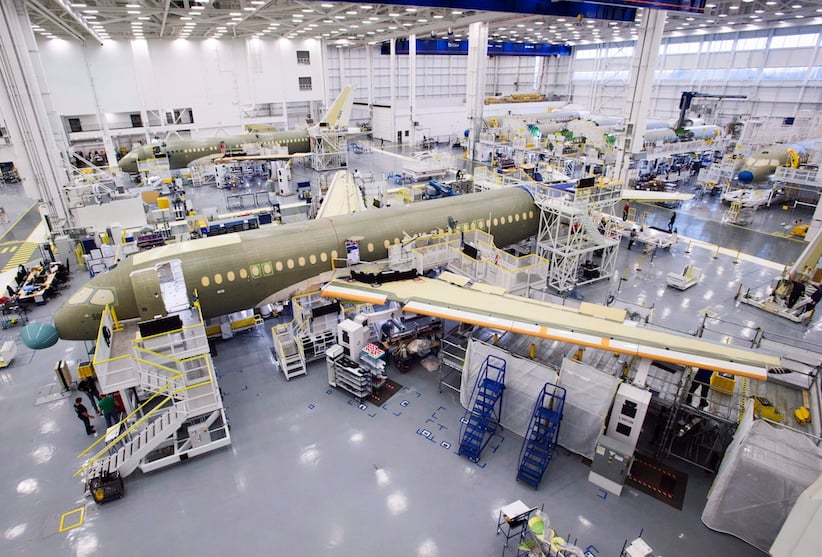
It speaks to another inherent problem for Bombardier. The company is attempting to sell a brand-new aircraft to typically conservative airline industry executives, in a market dominated by established, deep-pocketed players who can discount their wares far more than the Quebec-based company can.
If all those external headwinds weren’t enough to thwart Bombardier’s new aerospace ambitions, tensions and disruptions within the company’s executive ranks only made the turbulence worse. According to the former Bombardier executive, who was involved in the development of the C Series, the problems with the aircraft were exacerbated by Pierre Beaudoin’s management style. “[Pierre] would tell people that he wanted to be challenged, but this would change when people actually challenged him.”
In 2005, Bombardier business aircraft president Peter Edwards abruptly left the company, following a budget review during which, according to the executive, Edwards stood up to Pierre. This former executive and another say Edwards was pushed out.
(Edwards declined to comment for this article. Bombardier spokesperson Isabelle Rondeau also declined to comment.)
Several members of Bombardier’s senior management left the company when Pierre became COO of Bombardier aerospace in 2001, and again when he became CEO in 2008. This in itself isn’t unusual; new executives generally clean house when they are appointed. Yet according to the two former executives, Pierre Beaudoin had curious hiring criteria. Any new hires “had one thing in common, which was they were French Canadian,” the executive, who is still in the airline industry, says. “This was totally different than his dad, who basically wanted the best executives to run the company, irrespective of where you come from.” (The Bombardier spokeswoman also declined to comment on these claims.)
“Pierre is not his father. Let’s just say that. Nice man, nice guy, but is a little bit over his head,” says Arvai, who adds that this was evident in the marketing of the C Series. “Orginally he believed that the airplane had such performance benefits that they could get a large premium for it. That was a lost opportunity. Bombardier should have taken a loss on first 50 airplanes, got the production line going, getting the airplanes up. And I think that was a strategic mistake by Pierre.”
Bombardier’s dual-class shares, which have existed since 1969, are a product of Joseph-Armand Bombardier’s desire to keep the company under the control of the Bombardier and Beaudoin families. But when it came time for Joseph-Armand’s son Laurent to select someone from the third generation to steer the company into the future, problems arose.
According to the source close to the family, Pierre wasn’t his father’s chosen successor. Rather, Laurent Beaudoin wanted his daughter Élaine to eventually lead the company. “She is most like Laurent in terms of common sense and intellect,” the source says. “But he couldn’t get her interested in the business.” (On this question too, Bombardier spokesperson Rondeau declined to comment.) Today, Élaine Beaudoin is a corporate director of Canam Group Inc. and serves on other corporate boards.
According to this source, former Bombardier executive Raymond Royer, Laurent Beaudoin’s right-hand man, advised his boss against grooming Pierre for the role of CEO. (Royer didn’t return a request for comment.) Indeed, in 2009 Pierre himself told the business newspaper Les Affaires that when he was younger he wasn’t interested in even working at Bombardier.
Once in, though, he took to the company with gusto. Among other things, he oversaw the rollout of the Sea-Doo personal watercraft in 1990, and was president and COO of the company’s recreational products group by 1996. He was in charge of the entire company 12 years later.
In 2007, as president and COO of Bombardier Aerospace, Pierre helped launch the Learjet 85 program. As with the C Series aircraft, which launched eight months later, the Learjet was loaded with new features and built from composite materials—“an aircraft that is set to redefine the mid-size jet category,” as Pierre put at the time.
Yet the plane was plagued with delays, and Bombardier paused the program in early 2015 before shelving it indefinitely last fall.
Missteps aside, the Quebec government believes it is crucial to finance Bombardier and the C Series—and strongly suggests the federal government do the same. Through Investissement Québec, its investment arm, the Quebec government has bought a minority stake in the C Series program.
“Bombardier had three choices. It could have abandoned the product. It could have sold it lock, stock and barrel to another company. Or it finds partners who will ensure it stays in Quebec. That is what we decided and it’s up to the federal government to do the same,” says Jacques Daoust, who until a recent cabinet shuffle was Quebec’s minister of the economy.
The federal government has yet to say definitively whether it will make a similar investment in Bombardier. “There has to be a strong business case for making a federal investment and any assistance would have to be in the best interest of all Canadians,” says Industry Canada spokesperson Sabrina Foran.
When it comes to employment, Bombardier certainly has a compelling political argument. There are 41,750 people employed in the aerospace sector in Quebec, according to a 2014 study by the industry group Aéro Montréal. Bombardier is the biggest employer in the industry. Much of the small- and medium-sized aerospace businesses rely on the company to buy their goods and services. Essentially, Bombardier has made itself too big to fail.
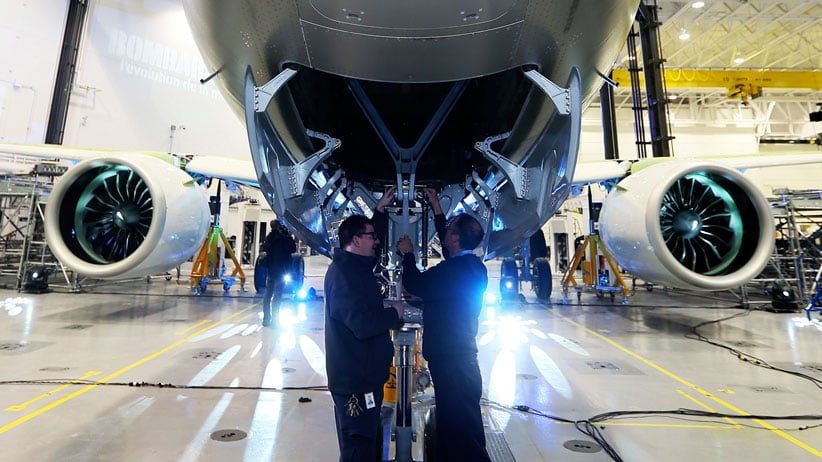
In Bombardier’s facility in Mirabel, the C Series production line hums along efficiently. Workers dart between fuselages, which are in various degrees of assembly; most of these planes will go to Swiss International Airlines, which bought a fleet of the planes early on. “There is clear interest from Air Canada,” says Bombardier spokesperson Isabelle Gauthier.
C Series president Rob Dewar is optimistic that the federal government will reverse a recent decision and allow Porter Airlines to fly jets to and from Toronto’s island airport. (In November Ottawa disallowed jets, which was a considerable setback for the C Series.) “It’s not done yet. Porter’s working on it,” Dewar says.
Optimism for the C Series resonates up Bombardier’s chain of command. Transport Canada recently certified the CS100; the test model that did the deed is now a flying sales pitch to prospective customers. And though there are only 243 confirmed orders, the sky is practically the limit. “According to the analysis we’ve done, over the next 20 years there is an opportunity for 7,000 airplanes or so in the 100 to 150 [seat] category,” says Bombardier commercial aircraft president Fred Cromer. The company is also less hidebound to the original pricing of the C Series. “Pricing is an issue, and we understand what the issue is,” Cromer says. “We’re trying to be a little bit more open about what we’re doing here, and that’s important, for better or worse.”
Meanwhile, Pierre Beaudoin seems as entrenched as ever. A rumour circulated in a Reuters report that he was stepping down was quickly swatted aside by the company. After all, the Quebec government invested in the company without mandating a change in the company’s governance structure. Perhaps Ottawa is next.